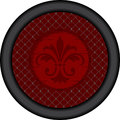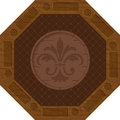bivey
Full House
Ive decided to add a third table to the Chateau lineup. I use mostly round tables and have not made a table to date. I've decided to try my hand at a raised rail oval with folding legs. I'll use this thread to update progress and ask questions. Feel free to enjoy the trials of my first foray into the woodworking world.
Basic plan is for a 5" rail on a table of 88" x 44"
Raised rail with decorative nails
Folding legs.
Vinyl material
As yet undesigned felt.
NO racetrack
No cup holders (will likely add swing out holders later on.)
Currently planning on using 3/4 inch ply.
I'm looking into purchasing a router for the curved cuts.
Basic plan is for a 5" rail on a table of 88" x 44"
Raised rail with decorative nails
Folding legs.
Vinyl material
As yet undesigned felt.
NO racetrack
No cup holders (will likely add swing out holders later on.)
Currently planning on using 3/4 inch ply.
I'm looking into purchasing a router for the curved cuts.
Last edited:



